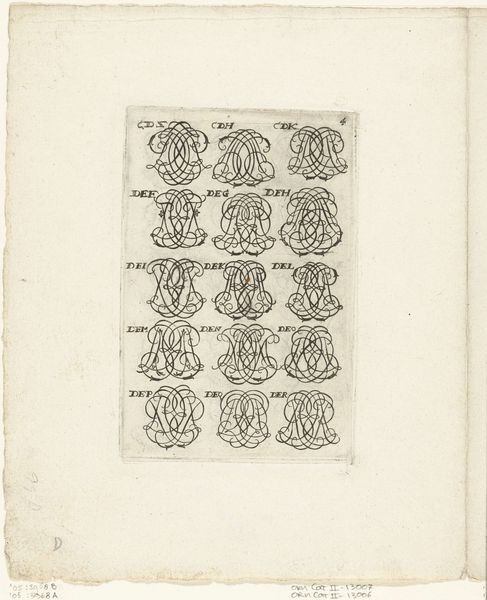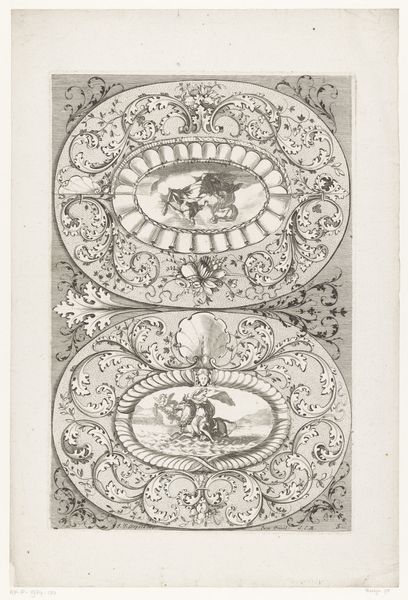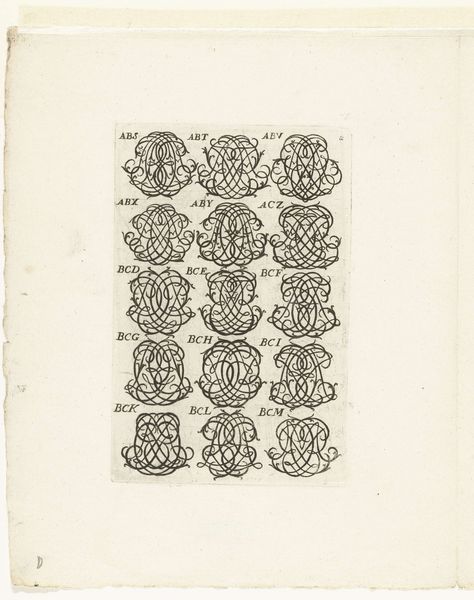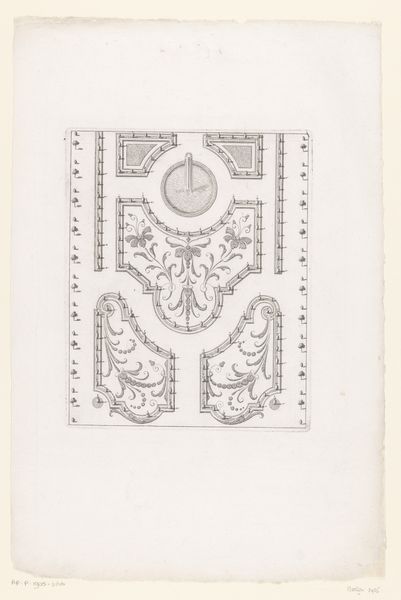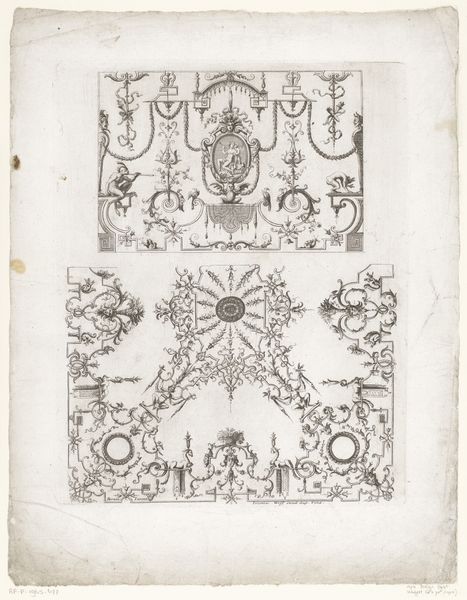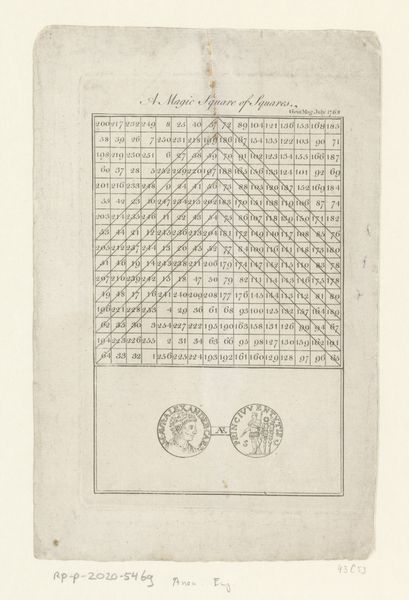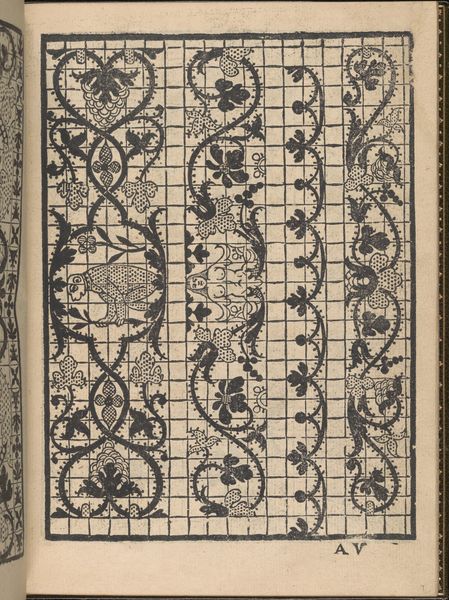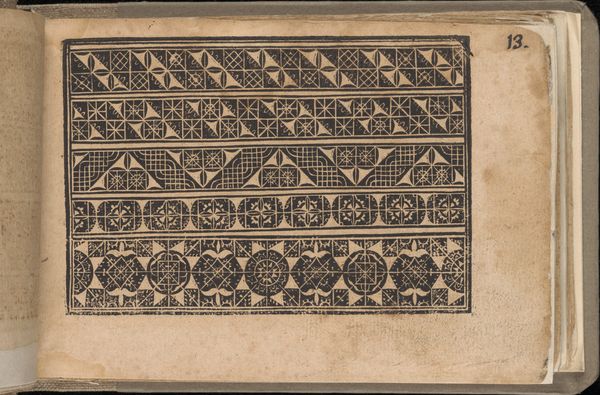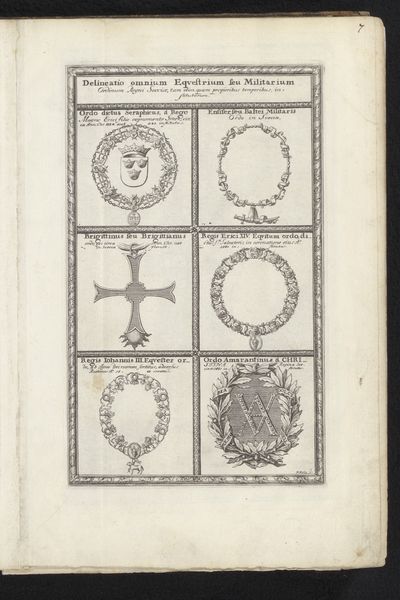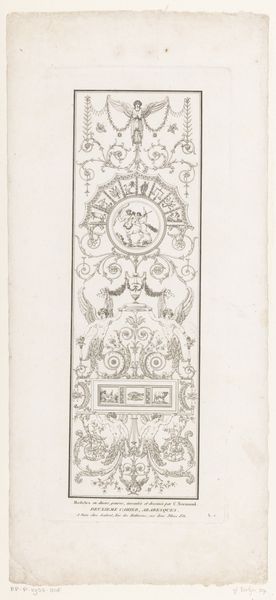
drawing, graphic-art, print, paper, engraving
#
portrait
#
drawing
#
graphic-art
# print
#
paper
#
history-painting
#
coin
#
engraving
Dimensions: height 263 mm, width 164 mm
Copyright: Rijks Museum: Open Domain
Curator: Here we have "Munten van Zweedse koningen," or "Coins of Swedish Kings," a 1693 engraving by Willem Swidde, currently held here at the Rijksmuseum. What strikes you initially about this piece? Editor: Well, I'm immediately drawn to the repetitive nature, almost like a textile pattern, but formed by currency. It makes me think about the mechanics of reproduction and how readily images were being circulated by this point. You know, the nuts and bolts of its production. Curator: It's interesting that you mention that! The systematic presentation does give the impression of a well-ordered collection, almost a family tree expressed through coinage. Look closely. Can you see the crowned heads, the heraldic symbols... They are carefully wrought. Editor: True. The fine lines of the engraving are quite precise. I’m also thinking about the paper it’s printed on. The labor, resources and infrastructure necessary to make this… How available and distributed could it have become in the 17th century? Curator: Consider each coin as a symbol of sovereignty. Even miniaturized here, these images represent power, history, and a kind of lineage. They are not just about wealth, but the right to rule. Editor: So, it is more than just pretty pictures or craftsmanship. As graphic art it also acts as propaganda and the normalization of hierarchies. Also to be distributed so widely – these must have ended up everywhere… The agency! The purpose. Curator: Exactly! This engraving makes accessible images that would normally circulate only amongst the elite. But with more reach this artwork also gives an important record to future audiences, such as us, of the past rulers in visual form. Editor: Yes. In the context of the late 17th century and considering that the artist likely worked with workshops with skilled laborers to reproduce these, and also their sheer number… that alone hints at a complex matrix of social relationships in Holland. Curator: It certainly adds another layer to our understanding. Looking at how we preserve this drawing and then share its digital version online it seems we're not so different from people in the 17th century looking at older coins! Editor: Indeed, it highlights a constant evolution of visual reproduction and distribution which is also part of culture as a whole.
Comments
No comments
Be the first to comment and join the conversation on the ultimate creative platform.
